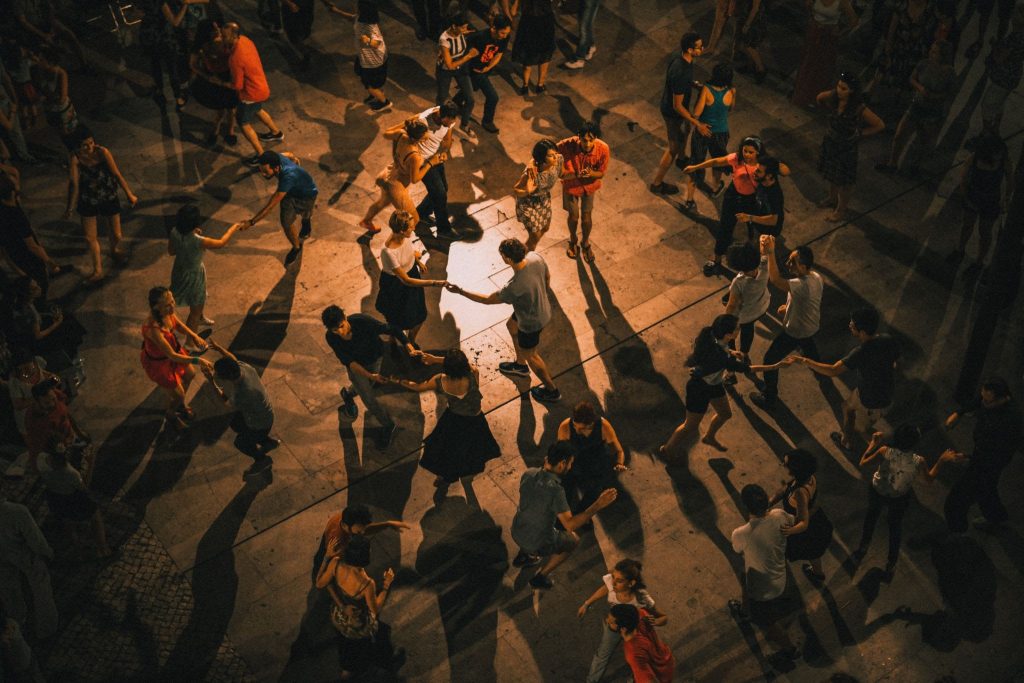Swing dance: think Frank Sinatra, Ella Fitzgerald, Billie Holliday, 20’s Charleston, 40’s big band, 50’s rockabilly. Maybe you’ve never heard of it, maybe you’ve done a bit of it, maybe you’ve seen it in a movie, maybe you’ve gone to one or two ETHELS meetings (Eastern’s Toe-tappin Heel-stompin East Coast Lindy Hoppin Swing Club). Many people today think it’s this old kind of dancing that’s from an oppressive era that no one under the age of 60 does anymore.
Did swing dance get its start in an oppressive era? Yes, in fact, but it was a bug, not a feature, of that oppression. Let me explain. Swing dance was created and developed by Black Americans during the Harlem Renaissance of the 1920s, building on many aspects of African-American dance, alongside their development of jazz and blues music. The 1920s, of course, were during the Jim Crow era–during segregation. Hence swing dance’s start in an oppressive era. However, the Harlem Renaissance in all of its facets and glory was progressive–it birthed Black American art so popular that even mainstream art today has appropriated its styles, it saw significant economic and class mobility among many Black Americans–and all of this progress occurred in spite of the racial segregation and disenfranchisement of the era. Swing dance, and its music, was a part of that progress. Live jazz music or big band music with a wooden floor in front of the stage for dancing was cheap, accessible leisure, even moving into the Great Depression of the 30’s and wartime of the 40’s. Furthermore, spaces for swing dance were some of the few places where Black and white people of opposite genders could (relatively) freely and openly interact and touch. This is an incredibly important note, because the era of segregation harbored nasty, politicized hatred of multiracial relationships. Historically, swing dance has roots in the progressivism of its day, artistically, economically, and racially.
Today, if you find yourself in front of live jazz or rockabilly music with a dance floor, the majority of swing dancers will probably be white. This is partially due to white Americans’ appropriation of successful and popular Black art, and partially due to the fact that the progressive Black music and dancing of our day is in other genres: rap, hip hop, etc. However, if you look closely at today’s swing dance, you’ll also see something relatively new: gender progressivism. Swing dance’s boom was just after the 19th amendment was passed (giving white women the right to vote), its heyday was decades before Black women were enfranchised, and the country was deep in the throes of heterosexist patriarchy, in Black communities and in white. But now, if you go to a swing dance venue or maybe an ETHELS meeting, you can see two men dancing together, two women dancing together, and even women leading men. During lessons, you’ll hear less of “Ladies, over here, gents, over here,” and more “If you’re learning to lead, over here, if you want to learn how to follow, come here.”
Swing dance (with its many forms, including Lindy Hop and jitterbug) is still alive and well today. A not-insignificant number of young people enjoy swing dance, and there’s even international competitions and conferences for swing dance that are mostly attended by millennials and older Gen Z’ers. Its inextricable connection with Black American progressivism from the Jim Crow era cannot be forgotten by white dancers, and it is a home for expressions of gender progressivism today.
Sources: Sinead McGrath for Medium; Nicole M Baran for Bitter Southerner, Saint Savoy Ballroom, Camp Hollywood

